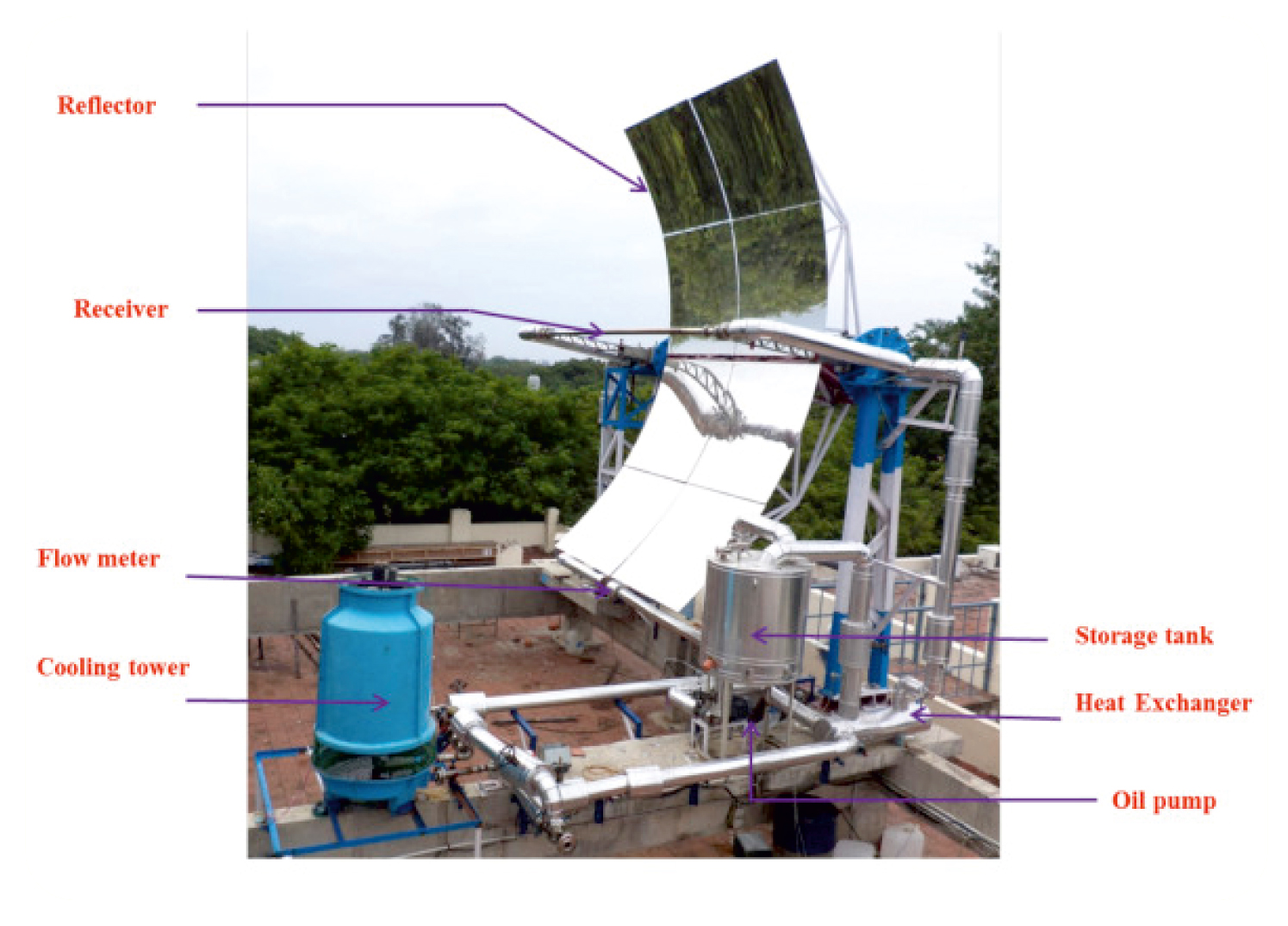
Being a tropical country, receives sunshine almost throughout the year. This geographical advantage allows the country to harness solar energy, a renewable and environment-friendly source of power. States such as Bihar, Haryana, Madhya Pradesh, Maharashtra, and Gujarat have great potential to harness this energy, which can help reduce the reliance on non-renewable and polluting energy sources such as coal and petroleum. In this regard, the National Solar Mission was launched with the goal of providing 20,000 MW of solar power by 2022. However, low rates of energy generation from solar power remain a major roadblock in achieving this target.
Dr. K. Srinivas Reddy and C. Ananthsornaraj from IIT Madras have designed and tested an indigenously developed low-cost parabolic trough collector (PTC) system for concentrating solar energy. This research aims to improve the efficiency of solar devices, offering valuable insights for manufacturers and researchers in the field of solar energy.
Dr. Reddy, a Professor at IIT Madras, emphasizes that solar energy technology, particularly Concentrated Solar Power (CSP), holds significant promise for achieving sustainability in the energy sector. CSP technology can meet both thermal and electrical energy demands due to its high dispatchability and reliability.
PTC systems concentrate sunlight onto a small area, where it is absorbed and used for heating, which in turn generates energy. The system includes a concentrator/reflector, receiver, supporting structures, and a tracking unit. The concentrator reflects sunlight onto a receiver, placed at the focal point, to heat a liquid. This heated liquid produces steam to run turbines and generate electricity. The tubes that absorb sunlight have a glass exterior and a metal interior, containing a heat transfer liquid like molten salt or oil.
To reduce thermal losses, the space between the glass and metal is maintained at low-pressure conditions, creating an evacuated receiver system. While these systems are costly, they offer high efficiency in converting thermal energy into electricity.
Dr. Reddy highlights that the new design of the PTC system is lightweight, low-cost, and efficient under various climatic conditions in India. The system can be effectively integrated with applications like desalination, space heating, and cooling.


The scientists developed a reflector with a 5.77-meter aperture and an 80.2-degree rim angle for both evacuated and non-evacuated systems. The reflector featured inner and outer mirrors to reflect sunlight, with Therminol VP1 used as the heat-transfer liquid. To optimize sunlight absorption, the system was oriented along the North-South axis and tracked the sun, moving from east to west throughout the day.
The efficiency of the installed system was tested in terms of optical and thermal efficiency. Optical efficiency refers to the amount of energy absorbed by the tube relative to the total energy received by the collector, while thermal efficiency measures the heat collected relative to the heat gained by the system. The scientists found that the optical efficiency of the evacuated system was 72%, while the non-evacuated system achieved 68% when heat loss was minimized.
The rate at which the heat transfer liquid flowed also impacted the system’s thermal performance. At a higher flow rate (0.12 kg/second), thermal efficiency increased (66% for the evacuated system and 64% for the non-evacuated system), while at a lower flow rate (0.06 kg/second), thermal efficiency decreased (64.3% for the evacuated system and 62.1% for the non-evacuated system). Thermal efficiency also varied depending on weather conditions, with performance differing on sunny and cloudy days.
An expert from IIT-Delhi, who was not involved in the study, mentioned that parabolic trough collectors are widely used in the industry for solar thermal applications, and the data gathered is valuable for evaluating the potential of this technology.
Looking ahead, the team plans to commercialize this technology and explore its application with energy storage, aiming to provide sustainable energy solutions for agriculture, food, dairy, and industrial process heat sectors.
Article by Aditi Jain










